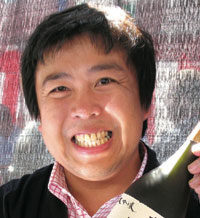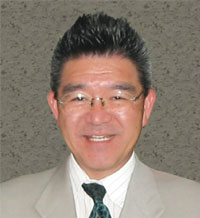Originally, Japanese sake varies greatly in regional characteristics, along with sake quality. Although Japan is a small island nation, the land stretches great distances towards the north and south, surrounded by the ocean and many mountains. Therefore, various climates and natural features make up cold to warm regions, generating significant differences in water quality and geological features by region, also reflected in the differences in sake rice. Also, the traditional art of sake production differs not only by climate and natural features and the brewery master’s brewing method, but also according to the region - influenced by regional history and culture, local produce, and dietary customs, etc. - which of course produces the differences in flavors.
For example, sake from Nada city, where sake is produced using water with high degree of hardness since ancient times, is known as the pure and dry “Otoko-zake” (“Male Sake”). On the other hand, sake from Fushimi – a region with soft water – is soft and sweet to the palate, referred to as “Onna-zake” (“Female Sake”).
Also, many of the sake brands produced in the Hiroshima region are sweet, while sake from Kochi and Niigata prefectures are known to be dry.
In that case, does the difference in sake quality in these regions since ancient times still exist today? A sake quality survey of commercially sold sake brands conducted every other year by Japan’s National Tax Agency Liquor Administration revealed that the overall sake trend tends to be dry and clean, while the general sweet, dry, rich, and clean flavors for which each prefecture is known still remains consistent to this day. However, this finding is not consistent when reviewing individual sake producers, for current sake brewing technologies can mostly control the degree of sweet, dry, rich, and clean flavors freely.
One factor for the reduced regional differences among Japanese sake brands is due to the recent popularity of Ginjo sake. Previously, it was said in the sake brewing industry to “Apply the formula YK-35 to produce your sake to garner a Gold Award at The Annual Japan Sake Awards.” Y-35 refers to combining Yamadanishiki rice (Y) from Hyogo prefecture with Kumamoto yeast (K) at a rice-polishing ratio of 35 percent. Following this formula will produce high-quality ginjo sake while diminishing regional characteristics.
This trend is not limited to Ginjo sake. Rice, the main ingredient of Japanese sake, is easily shipped compared to the grapes used to produce wine, thus the demand for high-quality ingredients often results in the use of rice from renowned production regions. The choice of yeast that significantly impacts the sake aroma is mostly the “association yeast” with the same property. Other important factors are the high degree of milling, processed water quality, frequently activated carbon filtration, distilled alcohol added, etc., that further diminish the individual sake flavor.
However, new yeast is being developed recently by prefecture, with many breweries using local rice brands to produce their regional sake, thus increasing the likelihood of new regional flavors emerging.
日本酒の地域性
本来、日本酒は地方色が豊かで、酒質も多様な酒である。わが国は狭い国土ながら南北に長く、海に囲まれていて山も多い。そのため、寒冷地から温暖地に至るさまざまな気候風土が形成されており、地域による水質や地質の違いが大きく、米も違う。また、日本酒造りの伝統技術は、気候風土や杜氏の流派ばかりでなく、それぞれの地方、地域の歴史や文化、産物、食習慣などと密接に関わっているから、味の違いがあって当然といえる。
たとえば、昔から硬度の高い宮水で仕込まれる灘の酒は濃醇辛ロの「男酒」として知られ、反対に、軟水地域である伏見の酒は柔らかな甘口の「女酒」といわれてきた。
また、広島に代表される瀬戸内海沿岸地域の酒は甘口が多く、高知や新潟の酒は辛ロが多いともよくいわれる。
では、このような地域による酒質の違いが、現在も昔と同じようにあるのだろうか。全国の国税局鑑定官室が1年おきに行なっている市販酒の酒質調査によると、全体に辛ロ・淡麗化が進んでいる中で、昔からいわれているような地方による甘辛の傾向はある程度残っていることが分かる。しかし、これは都道府県単位での平均的な甘辛・濃淡度の話であって、個々のメーカーとして見ると必ずしもそうではない。現在の酒造技術をもってすれば、酒の甘辛・濃淡はほとんど自在にコントロールできるからだ。
日本酒の地方色が薄れている要因として、よく昨今の吟醸酒ブームが挙げられる。ひと頃、酒造業界では「YK-35で造れば全国新酒鑑評会で金賞が取れる」といわれたが、YK-35とは、兵庫県産の山田錦(Y)と熊本酵母(K)を使用し、35%の精米歩合にするという意味。この公式通りに造れば高品質の吟醸酒ができるが、地域による差異はないに等しい。
この傾向は吟醸酒に限らない。日本酒の主原料である米はワインのブドウと違って輸送が容易であるため、高品質の原料米を求めるとどうしても、有名産地のものが使用されることになる。酒の香味に大きく関わる酵母にしても、大半が同一性質の「きょうかい酵母」である。その他、米の高度精白の重視、水質の加工、濾過での活性炭の多用、醸造アルコールの添加など、酒の香味を没個性化させる要因が多いことが指摘されている。
しかし、最近は県単位で新酵母を開発したり、地元産の米で地の酒を醸すという方針の酒蔵が目立ってきていることもあり、昔とは違った新たな地方色が生まれる可能性も期待されている。




